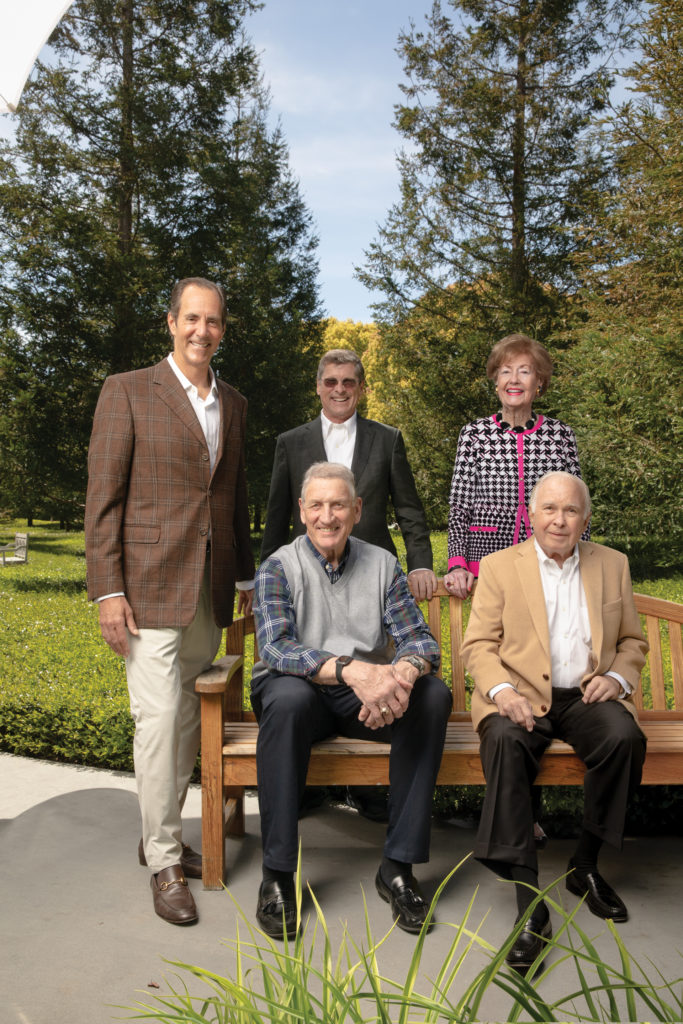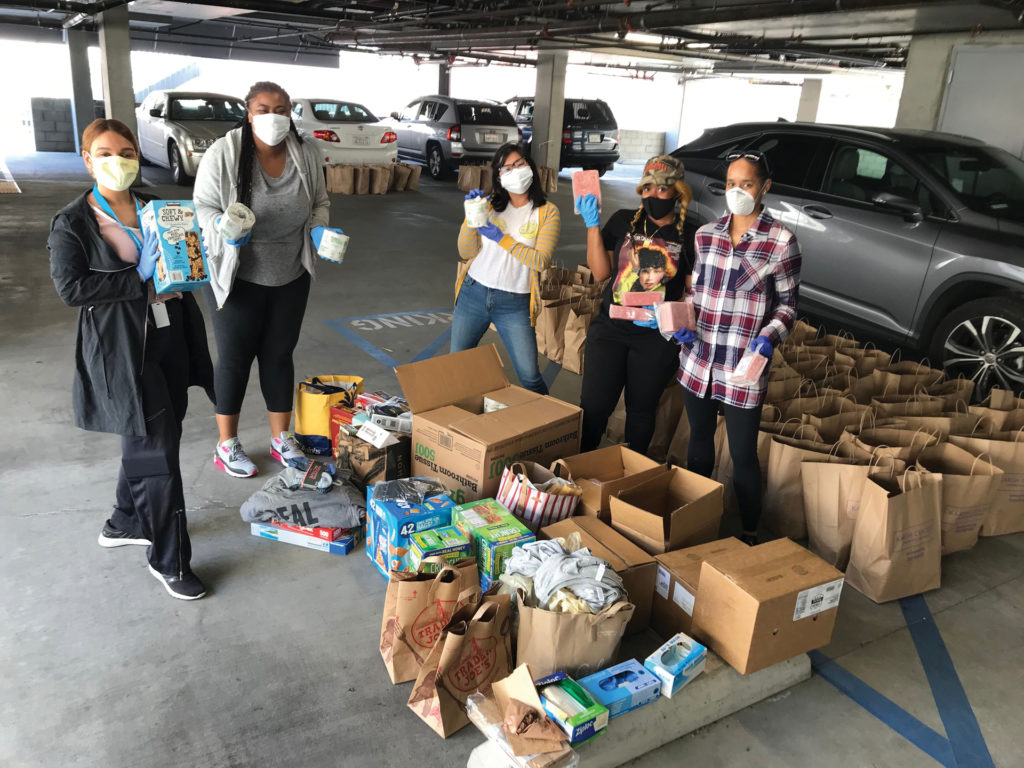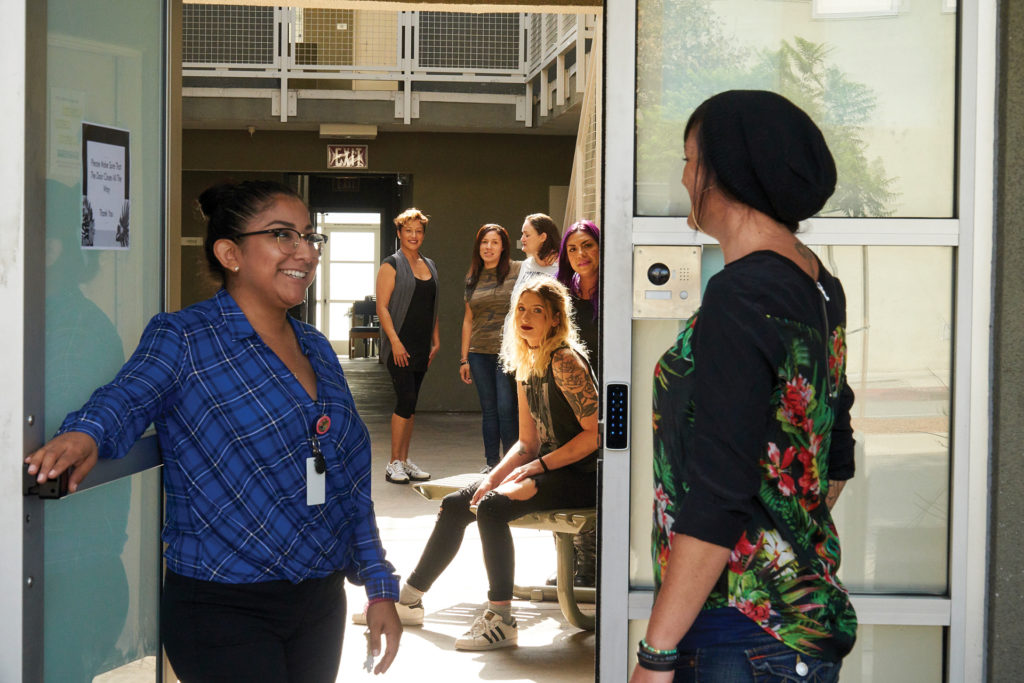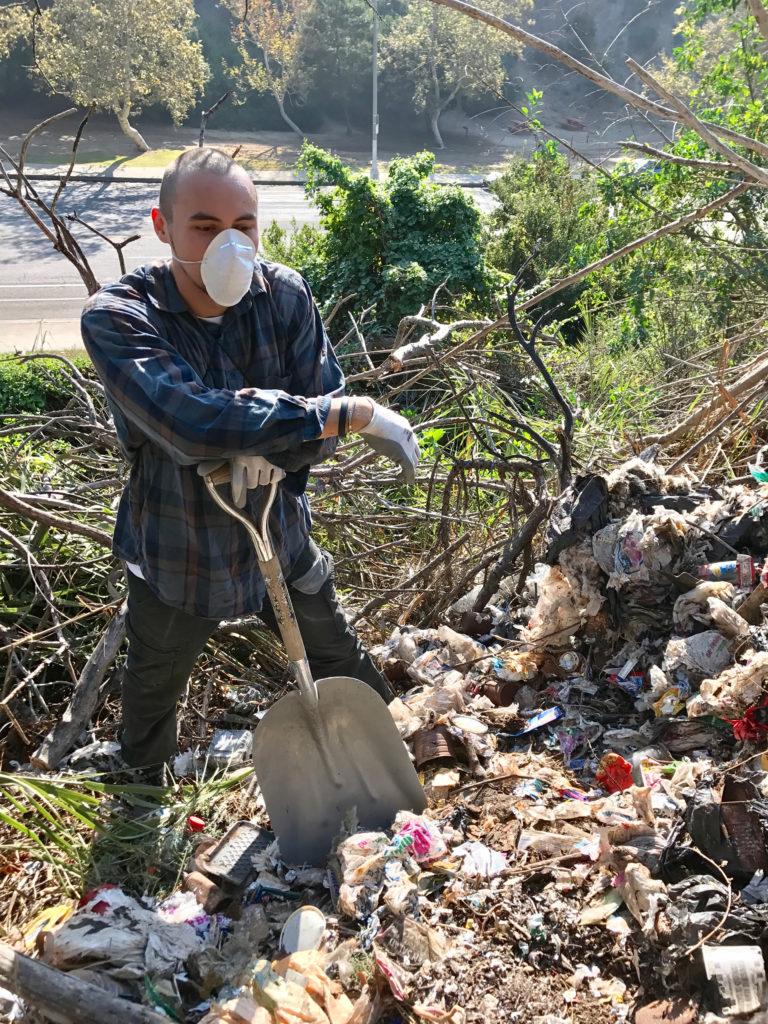Expanding Our Impact
THE COMMUNITY IMPACT FUND WAS LAUNCHED OUT OF A LONG-STANDING TRADITION OF CARING FOR OUR WESTSIDE COMMUNITY.

BY MELANIE ANDERSON
Each year in January, local nonprofit leaders and Saint John’s Health Center Foundation stakeholders enjoy a celebratory breakfast hosted by the foundation in honor of the new class of Community Impact Fund (CIF) grant recipients. “It’s the best meeting of the year,” says foundation trustee Bill Garland. “There’s such great energy in the room.”
Now, after five years of giving, friends and supporters of Providence Saint John’s Health Center can take pride in the unique CIF program and all it stands for.
The foundation began awarding CIF grants in 2015 after sponsorship of Saint John’s transitioned from the Sisters of Charity of Leavenworth to Providence Health & Services. As part of the agreement, the attorney general of California required creating a fund for health-related purposes that would be managed by the foundation and distributed to community partners serving vulnerable populations within the hospital’s service area of 29 zip codes.
But the true roots of the CIF can be traced back to the mutual relationship of respect between the hospital and the Westside community that stretches back to the founding of Saint John’s in 1942, says Robert O. Klein, president and chief executive officer of the Saint John’s Health Center Foundation. The hospital had always worked with various not-for-profit service providers on the Westside to help address specific community needs. During the turbulent months in 2013–2014 when the health center’s sponsorship and future were steeped in uncertainty, the foundation, its trustees and the hospital leadership and physician staff clung to the hope of remaining true to its values of compassionate service to the community, he says.

Thus, when the Sisters of Charity agreed to turn over the sponsorship of Saint John’s to the Sisters of Providence, that goal was not lost, Klein says.
“The Sisters of Charity passed the governance, heritage and values they established at Saint John’s over the years and trusted the Sisters of Providence to carry that forward,” he explains. “The attorney general could see the health center had supported the community and that Providence was the right sponsor for Saint John’s. Saint John’s, as a not-for-profit, had been a community partner in the truest sense.”
The transaction between the two religious orders involved about $70 million that would have stayed with the Sisters of Charity health system, with no distribution in California. However, the attorney general ruled that those funds could not leave the community.
“One of the requirements for a change in sponsorship of a nonprofit hospital in California is approval of the California attorney general,” says foundation trustee Carl McKinzie. “The foundation trustees did not want money that had been raised in the community to flow outside the community. The attorney general fully agreed.”
Thus, the Community Impact Fund was born. And while the agreement details might have been a bit complicated, the result was clear. The Community Impact Fund would allow Saint John’s to continue, and even increase, its commitment to community service and charity.
“Saint John’s has a history of being very active in the community, obviously from the medical perspective but also other perspectives—whether it was sponsoring the 5K/10K Fourth of July race in Pacific Palisades or being supportive of some of the great institutions like Venice Family Clinic and WISE & Healthy Aging within the service area of Saint John’s,” says foundation trustee Bill Simon. “When this pool of money became available, it really was a natural extension of what Saint John’s had been doing for decades.”
Foundation trustee Kathleen McCarthy Kostlan agrees. “The idea that a hospital has funds like this to do good work is just fantastic, and it really speaks to the gratitude from the hospital to the community and vice versa,” she says. “Each supports the other, so it benefits both immeasurably.”
Along with others, Garland, Kostlan and Simon eagerly joined the inaugural CIF Advisory Committee, which was chaired by McKinzie and tasked with overseeing the fund.
“We decided as a committee very early on that rather than take a shotgun approach and give every nonprofit in our service area a small stipend, we would endeavor to make needle-moving changes,” says Garland. “We have a smaller number of causes that we give to, but we’re making impactful donations that are transforming these organizations and really allowing them to expand the number of people served.”
“IT BRINGS A SMILE TO MY FACE WHEN YOU SEE THE IMPACT IN OUR COMMUNITY OF THE CIF, WHETHER IT’S CLARE, SOUND BODY SOUND MIND OR THE SANTA MONICA FAMILY YMCA. YOU SEE AN IMMEDIATE IMPACT.”

EFFECTING NEEDLE-MOVING CHANGE
Each year, the foundation awards CIF grants to 15 to 18 community partners focused on children and families, homelessness, and/or mental and behavioral health. “It brings a smile to my face when you see the impact in our community of the CIF, whether it’s CLARE, Sound Body Sound Mind or the Santa Monica Family YMCA,” says Simon. “You see an immediate impact.”
The committee, which does not accept unsolicited grant applications, identifies potential grantees based on need and knowledge of organizations doing good work in the community. JMC Philanthropic Advisors helps vet candidates and measures the impact of the grants. “Their professional guidance gives us comfort that qualified grant recipients have been identified, verification that the funds have been well spent and the extent to which grant goals were accomplished,” says McKinzie.
“These committee members are dedicated volunteers,” says Jeff Schaffer, president of JMC Philanthropic Advisors. “They are invested in the community and have long knowledge of the needs and resources available to support the community. They are passionate about the work.”
Responsible philanthropic giving is hard work, Schaffer notes, requiring committee members to spend many hours on due diligence, site visits, grantee meetings and measuring outcomes. The committee’s desire to make the most out of the program was apparent during the pandemic.
“In the past year, when we were dealing with the COVID-19 pandemic, the committee was willing to step up and make accommodations and grants to allow the grantees to shift the funds to meet urgent needs,” he says. “The committee members have demonstrated they are very good partners to the nonprofits supported by the CIF.”
Committee members also hear directly from grantees at the annual breakfast, committee meetings, site visits and, in some cases, personal conversations. “In fact, each member has an assigned cause that they’re close with, either through past giving or they know people in upper management or they’re volunteers within that organization,” says Garland, who identifies the Westside Food Bank as one of his causes.
Simon has a special connection to UCLA Health Sound Body Sound Mind, which provides state-of-the-art fitness equipment and a curriculum to enhance physical education at local schools. He and his wife, Cindy, founded the program as a nonprofit before UCLA Health acquired it. Thanks to CIF support, Sound Body Sound Mind has expanded to serve many middle schools and high schools within the Saint John’s service area.
“We’re in probably 10 schools in the Saint John’s service area, so that’s about 15,000 students served every day school is in session,” says Simon. “That’s an example where the day you put in the equipment students can start working out. The focus has been on nonathletes, because the athletic teams have special coaching and equipment at many schools. For example, at Santa Monica High School and at Venice High, we specified that the equipment be used principally by students in their physical education classes.”
CIF grants have also benefited the hospital. When Saint John’s experienced an uptick in homeless individuals presenting to the emergency department despite not having medical emergencies, the CIF began funding a charity care navigator at the hospital.
“We would have to divert ambulances because we just didn’t have room,” says McKinzie. “By getting navigators who understand the social services area and can help connect people to meals, other health care needs through agencies such as Venice Family Clinic and housing through The People Concern, it’s made a big difference for the people who are homeless and also for Saint John’s by freeing up beds in the emergency department or in the hospital. That’s one of my favorite CIF-funded programs.”
Another CIF grant helped launch a respite bed program at one of The People Concern’s Santa Monica access centers. “Basically, it’s a triage where a homeless person could receive basic medical care with a registered nurse, all through CIF funding, so they would have a place to go other than the emergency room,” says Garland, who was a Saint John’s emergency department volunteer for 11 years. “It dramatically reduced the backlog once we brought that program up online. That was something I saw on my weekly volunteering, and that was one of my more rewarding moments on the committee.”

RESPONDING TO CHANGING NEEDS
Over the past seven years, Kostlan says it has been gratifying to see the CIF program grow and evolve. “We started small and have gotten a little bit larger, and we’ve spread out a little bit in terms of our impact,” she says. “I don’t think initially we did anything with homelessness. That has come in more recent years. And as the need arises, we have been able to respond to it.”
During the pandemic, CIF grants have been crucial to helping the Westside Food Bank and other local nonprofits meet an increased demand for services.
“The attorney general gave us special permission to make emergency grants for things needed for the pandemic, particularly by the hospital,” says McKinzie. “The foundation made additional grants of about $5 million for COVID-19 related needs.”
Another unexpected but positive development has been the relationships and synergies that have formed among grantees because of the annual breakfasts and other gatherings of the grantees. “It’s neat to start the ball rolling by bringing these organizations together under one roof,” says Garland, “and then to see the conversations continue without the Community Impact Fund being part of it. That always brings a tickle to our hearts.”
Catholic Big Brothers Big Sisters, which McKinzie says “had an abundance of ‘bigs’ willing to help kids,” began working with the Boys and Girls Club of Santa Monica and the Santa Monica Family YMCA after connecting through the CIF. “I’ve derived great satisfaction from having a voice in funding some of these agencies and then seeing the good that’s come from that,” says McKinzie. “It’s really made a difference in the community, the knowledge of the community and the health care of the community.”
The foundation’s CIF committee members relish their roles, Klein says.
“I think the CIF has been a wonderful undertaking for us,” he says. “We’ve also benefited by a robust investment market and return, and we’ve been able to grow the fund somewhat. The committee has had a great time doing this.”
